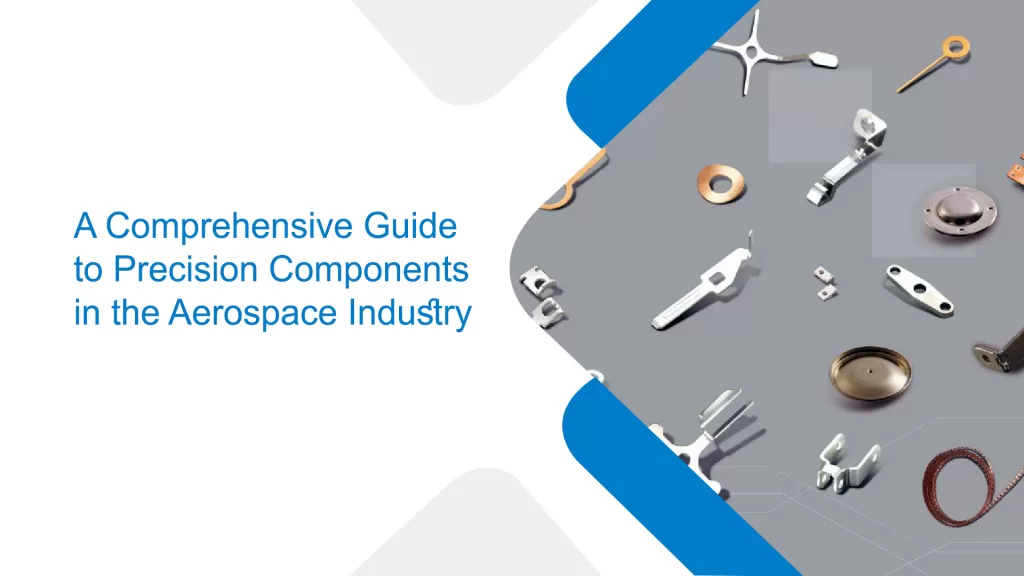A Comprehensive Guide to Precision Components in the Aerospace Industry
- Aerospace |
- Apr 17, 2025

Among modern sectors, aerospace is known for its new technology and smart ideas. Every small detail matters here, from flight stability to fuel efficiency. So, making sure every component is working well is essential. Aerospace precision components play a vital role in this. It helps maintain consistent performance without unexpected issues. But did you know how these tiny parts are making a huge impact? Let us look at everything you need to know about precision components in the aerospace industry.
An Overview of Aerospace Precision Components
You need to have a general idea of aircraft precision before getting into the technicalities. Aerospace precision is a high-profile technical design for the aviation sector. Precision components are critical for
- Vehicle safety
- Fuel efficiency
- Optimal performance
Aircraft often depend on components like engines, landing systems, and structural parts for proper operation.
Types of Precision Components
Aerospace includes a wide range of precision parts, each falling into specific categories. Not all serve the same goal. Still, there are some important points you should be aware of.
Aero Engine Components
You need to know that precision components in aircraft are created to withstand extreme conditions. They need to withstand
- High rotating speed
- Pressure
- Temperature
So, in order to ensure efficiency, aerospace parts like fuel injection systems and turbine blades need to be precisely built.
The Avionics Components
You should be aware that the avionics components add to the electronic system used in the aerospace and aerodynamic industries. Avionics are a vital component in aerospace, particularly in communication and aerodynamics. Yet, there are a few essential aspects about the avionics that you should be aware of, like the flight control, accuracy, and control interface. All can be handled via avionics.
Landing Gear Parts
Landing gear components have long been an example of precision work in aerospace. Parts such as wheels, braking systems, and shock absorbers must be made with great precision. This is to ensure safety while taking off and landing. The performance and durability of these parts are critical for keeping the aircraft safe. High-tensile manufacturers adhere to stringent industry standards and fabricate these parts with precision and caution.
The Structural Components
Aerospace precision components comprise numerous precision processes working together. Important structural components such as the tail section, fuselage panels, and wing assemblies are all carefully engineered parts. All these components play an essential role in the aircraft’s stability and strength. Each component is subjected to detailed quality control testing to provide durability, performance, and aerodynamic effectiveness. Precision part manufacturers specialise in producing extremely precise products for aerospace requirements.
An Overview of Precision Components Manufacturing
Every individual who has any interest in aerospace or works within the sector realizes the necessity for precision and trustworthy components. Precision component manufacturing requires the latest methods to match precise criteria. The primary technologies employed within the sectors are mentioned below.
CNC Machining
CNC plays a massive part in the aerospace manufacturing sector. This method lets manufacturers create complex and detailed parts with exact measurements. Manufacturers often rely on it to produce structural frames, engine components, and casings for electronic devices.
Additive Manufacturing
Additive manufacturing helps to create intricate parts with minimal material waste. The process is commonly applied to produce light parts with intricate details and enhances the structural efficiency. It facilitates quicker development and accuracy in design.
Electrochemical Machining (ECM)
ECM is a non-conventional machining process employed to produce parts with intricate shapes and minute details. It cuts away material through electrical energy and is best suited to produce smooth surface parts with tight tolerances. The process is commonly applied to parts that require high accuracy in aerospace engineering.
Injection Molding
Injection molding is also employed to manufacture lightweight parts, particularly non-structural ones. Producing plastic components with steady and reliable quality needs efficient manufacturing techniques. The process is appropriate for parts requiring them to be lightweight yet having the capacity to fulfill aerospace demands.
Emerging Trends Ahead
- The employment of lightweight solutions like advanced composites and new light materials
- Prioritization of sustainability through the use of environmentally friendly materials and manufacturing processes
- Use of digital twin technology to monitor systems in real-time and anticipate maintenance needs
- Designing future propulsion systems, including electric and hybrid types
- Space missions require extremely accurate components to enable prolonged operations
- Giving importance to precise production methods and careful choice of materials
The Bottom Line
Aerospace precision components improve the safety, efficiency, and performance of each flight. Such parts require superior design, advanced technology, and constant accuracy. We at Eigen Engineering know what this industry requires. That is why we bring in the latest tools with deep experience to provide consistent results every time for aerospace precision components. Contact us today and find out how we can provide customized solutions for your aerospace project.




